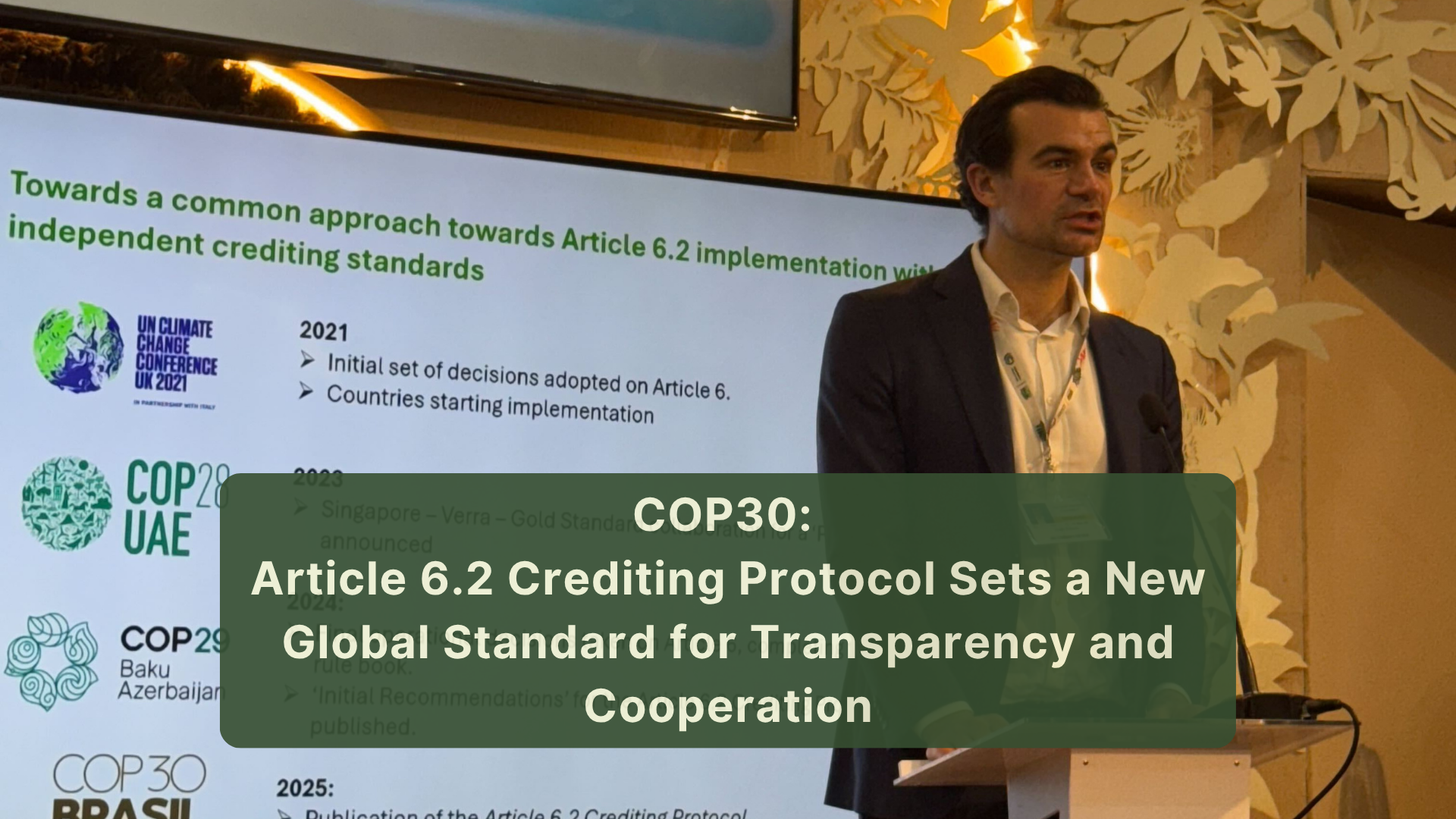Fairatmos at COP30: Article 6.2 Crediting Protocol Sets a New Global Standard for Transparency and Cooperation
News

Belem, Brazil - November 2025
A new chapter in international carbon cooperation begins at COP30 with the launch of the Article 6.2 Crediting Protocol, jointly developed by the Government of Singapore, Verra, and Gold Standard. This landmark framework provides a clear, unified pathway for countries and private actors to collaborate on credible, transparent carbon trading under the Paris Agreement.
Building Trust in Global Carbon Markets
The Article 6.2 Crediting Protocol establishes the operational foundation for how countries can authorize, track, and trade Internationally Transferred Mitigation Outcomes (ITMOs), carbon reductions achieved in one country and transferred to another to help meet climate targets.
Unlike previous fragmented approaches, the new Protocol harmonizes the roles of governments, independent crediting programs (ICPs), and project developers, ensuring all carbon transfers are traceable, transparent, and aligned with national climate goals (NDCs).
At its core, the Pprotocol enables countries to use existing independent crediting infrastructures like Gold Standard and Verra to issue verified credits under Article 6.2, while maintaining robust MRV (Measurement, Reporting, and Verification) processes and government oversight. This balance of flexibility and integrity is what the carbon market has long needed to scale responsibly.
Key Insights from the Article 6.2 Crediting Protocol
The full document outlines six major components that together bring consistency and accountability to global carbon markets. Here are some highlights:
-
Streamlined Authorization
The Protocol defines a clear authorization process for host countries to approve which projects and credits can be transferred internationally.
-
Governments issue Letters of Authorization (LOA) to confirm that credits can be used under Article 6.
-
Each LOA is linked to a Cooperative Approach Identifier, allowing every transaction to be traced from project level to UNFCCC reporting.
-
Credits are labeled in registries as “Authorized, Revoked, or Adjusted,” ensuring full visibility of their compliance status.
This structure brings long-awaited clarity to project developers and buyers, reducing uncertainty, administrative burden, and the risk of double- counting.
-
Dual-Layer Tracking: Credits and ITMOs
The Protocol introduces a two-layer system that distinguishes between:
-
Carbon credits (tradeable units issued by ICPs like Gold Standard or Verra), and
-
ITMOs (the accounting layer managed by national governments for NDC purposes).
This dual-tracking system ensures that every credit traded on the market corresponds to a verified mitigation outcome, and that once it’s transferred, it can’t be double-counted by the host country.
-
Consistent Reporting and Transparency
All participating countries and ICPs are required to provide annual and biennial transparency reports to the UNFCCC, feeding data into the Centralized Accounting and Reporting Platform (CARP).
This ensures that information such as authorizations, transfers, retirements, and adjustments is publicly accessible and verified, strengthening trust across Parties and market participants.
-
Voluntary and Inclusive Framework
The Protocol is a voluntary initiative, meaning countries and crediting programs can adopt it as they’re ready. It provides flexibility while maintaining high standards of integrity.
It also encourages the use of independent validation and verification bodies (VVBs) to support governments, reducing administrative load while leveraging private-sector expertise.
-
Future Evolution and Digital Integration
The Protocol anticipates future integration of API-based registries and digital MRV tools, allowing real-time data exchange between national and independent registries. This evolution will make Article 6.2 implementation faster, more secure, and easier to scale globally.
Why It Matters
This milestone is more than a technical framework, it’s a major leap toward global carbon market maturity. The Protocol ensures that every tonne of CO₂ reduced is accurately tracked, transparently reported, and credibly traded.
By doing so, it builds the market confidence needed to channel billions in private finance toward high-integrity mitigation projects, particularly in developing regions.
For countries like Indonesia, this clarity opens doors for projects in forestry, blue carbon, and renewable energy to gain recognition in international markets under transparent accounting rules.
Fairatmos’ Perspective
As a Southeast Asia-based project developer focused on land and blue carbon restoration, Fairatmos welcomes this launch as a pivotal moment to accelerate climate finance flows into regions that need it most. Transparent frameworks like Article 6.2 will empower countries to participate confidently in the global carbon market, attract sustainable investment, and scale up nature-based solutions.
📘 Download and read the full Article 6.2 Crediting Protocol below:

